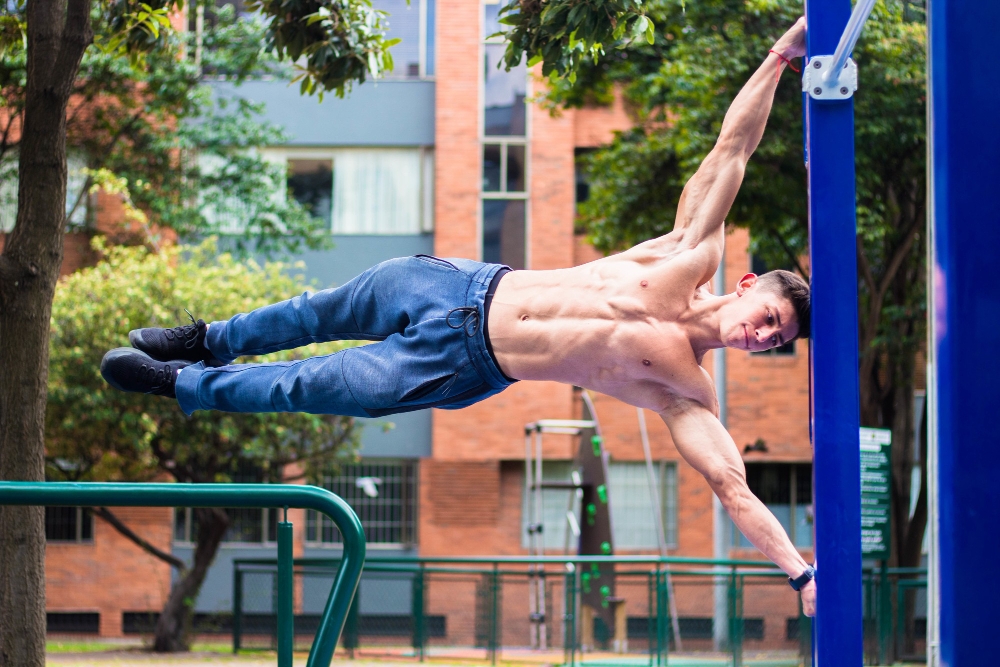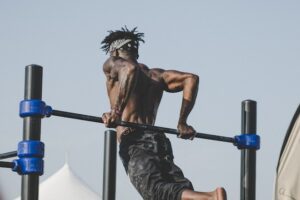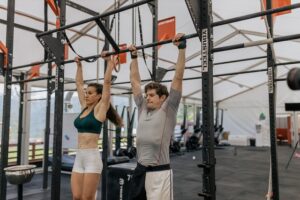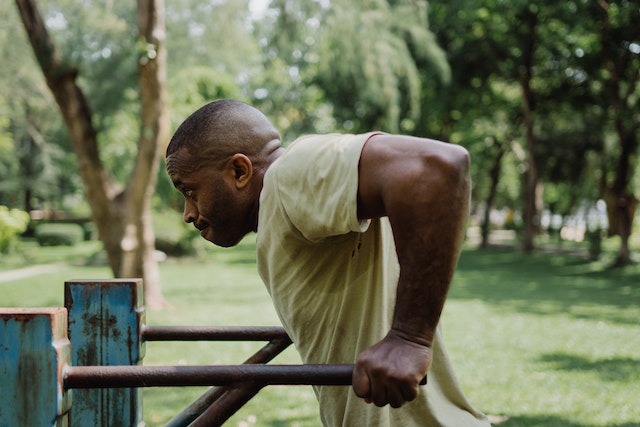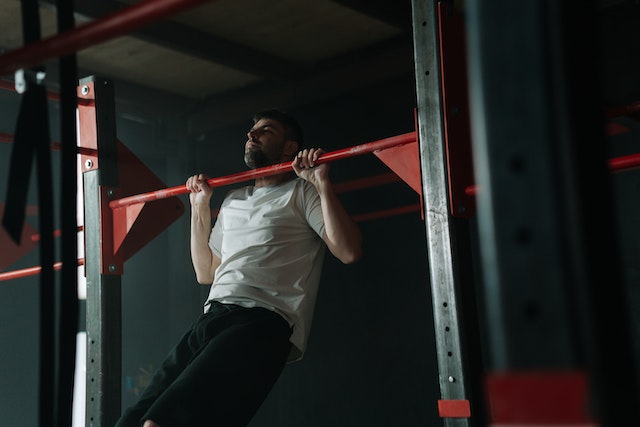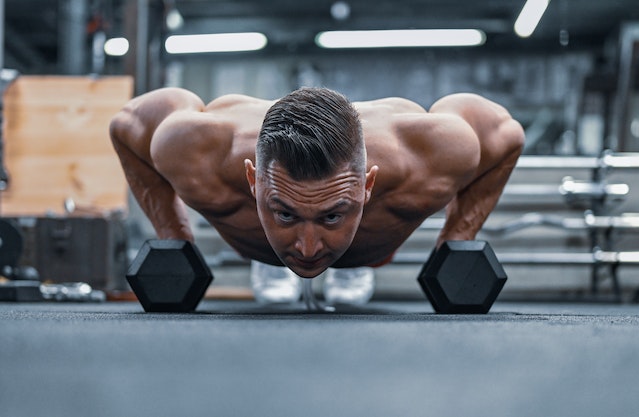What is the human flag?
The human flag is one of the most popular and impressive calisthenics skills.
It’s a static skill that consists of holding the position where the body is parallel to the ground supported by a vertical bar.
Although the human flag can be difficult for beginners because it requires time and commitment It’s relatively easy compared to other calisthenics skills like victorian or maltese. It’s usually considered harder than the back lever and easier than the front lever.
The human flag is an asymmetric exercise
The human flag is the only calisthenics skill that combines pushing and pulling movements. In every other skill, we use only one type of movement.
In the human flag upper arm pulls the body towards the bar and the lower arm pushes the body away from it.
It means that we should alternate the sides while learning the human flag or at least we should strengthen the side that we use less or not at all. Otherwise, we can get muscle imbalance.
Vertical vs horizontal bars
The human flag can be done on vertical as well as horizontal bars.
The vertical bar variation is more common due to the accessibility of that kind of bar. It can be done everywhere, on a tree or even on the street on a road sign.
Although the horizontal bars are less accessible it’s worth going to the street workout park or somewhere where you can find them.
It’s easier to do a human flag on the horizontal bars due to the much more comfortable grip. It’s best to start on horizontal bars because you will learn and progress faster and eventually switch to a vertical bar.
Prerequisites for the human flag
The human flag is a quite demanding calisthenics skill. Before you get down to it make sure you’re strong enough and you have a solid foundation so you won’t injure yourself. There are a few prerequisites that I recommend
As I already mentioned human flag requires pulling and pushing strength. I recommend you can do 10 pull ups and 15 dips. Core strength is also important so you should be able to do at least 60 seconds of hollow body hold. Another thing is shoulder mobility so work on that because the lack of mobility will result in compensations in the lumbar spine.
Human flag proper form
Proper form is the most important aspect while learning any calisthenics skill. By starting to learn with the correct form you will get better results. When the movement is performed correctly you will progress faster, it will be easier and that can help you prevent injury.
Straight arms
The arms should be completely straight – locked elbows. Even a slight bend will drastically increase the difficulty of the human flag. That’s because the weight is much easier to hold on straight elbows. With bent elbows, you generate more power from your biceps instead of the shoulders as it should. Straight arms make the exercises easier and also look better.
Hands placement
On the horizontal bars, the hands should be placed parallel to each other so that they create a perpendicular line to the ground. Any deviation from this rule will cause the generation of the additional bending or extending force of our arm which will significantly increase the difficulty of performed movement.
Grip width
Another important aspect of the proper form is the grip width. The too narrow or too wide grip will require much more strength to hold that completely horizontal position. Therefore you have to try many different options and find the best width for yourself.
Scapula position
The scapula should be elevated and neutral.
Don’t try to retract your scapula because the elevation is a natural position of the scapula in this kind of movement.
Engage the whole body
Although the human flag is mostly about upper back and core strength it’s a full-body movement. It involves your whole body, so don’t forget about that.
To maximize your human flag training, engage every muscle you can. From glutes and quads that will help with pelvic stabilization up to the neck and toes that will help to generate even greater tension in the whole body, which will translate into increased strength
Muscles worked during the human flag
It’s important to know the main muscles involved in the human flag to better understand the movement and to know what to focus on while training for it.
The human flag works most of the muscles in our upper body
The primary muscles worked in the human flag are:
- deltoids
- pectoralis major
- latissimus dorsi
- teres major
- triceps branchii
Additional secondary muscles worked include:
- Core muscles
- Trapezius
- Glutes
- Rotator cuff
Human flag progressions
3 progressions to help you master the human flag
45 degree flag
The first exercise that will help you achieve the human flag is 45 degree flag.
This is a human flag with reduced intensity because you’re not completely horizontal, you’re only on a 45 degree angle. The goal of this exercise is to teach you how to pull and push simultaneously.
Start with hanging on one arm on a pull up bar next to the vertical bar and then add the second arm.
Flag plank
In this variation is a human flag but with the feet on the ground.
It involves pulling a bar with the upper hand and with the second hand you push to the ground.
Over time as you build more strength you will be able to lift your legs off the ground.
Band assisted human flag
Attach the resistance band to the bar above your upper hand and to your feet.
With the assistance of the resistance band, exercise requires significantly less strength
Conclusion
The Human flag is an element that, first of all, requires time, and thus patience. Remember to properly prepare for learning this element and realistically assess your level of advancement, so as not to throw yourself into the deep water and try to make more difficult progression than you are able to do. Consider your health.
The key to achieving this goal is, above all, the accuracy of the exercises performed in order to properly engage the necessary muscle parts. So if you have chosen the human flag as your goal, give yourself time. Do not rush and do everything diligently and regularly.
